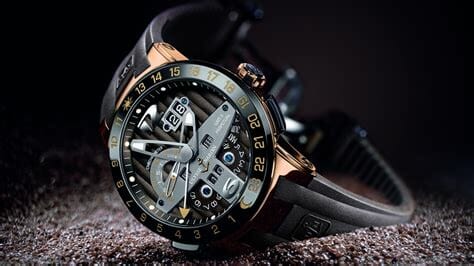While some people like the look of modern watches, more classic-looking models still have their appeal. Plus, a considerable advantage of the traditional ones is that you never have to worry about running out of battery and going through the hassle of having it changed (or changing it yourself).
Why bother when there are ingenious watch designs that do not need any batteries? Instead, these watches are powered by every single move of the body? Even the simple act of walking produces a “charge“ to keep the watch ticking. The secret lies in a weighted piece found inside the watch that moves when you are moving, and the kinetic energy it produces will wind the gear train.
What Is An Automatic Watch?

The worst-case scenario for a watch is when it dies or becomes inaccurate without your noticing it. After all, there is no alarm or sign that your watch has suddenly skipped a few seconds or stopped completely until you notice that the time is wrong. Many people who are busy and have appointments or schedules need to stay on the clock.
Thus, it is normal to wonder how an automatic watch can always stay accurate, especially when there are no movements that would recharge it. But in order to understand how long automatic watches last, you need to understand the mechanisms that make it work in the first place.
An automatic watch, which is also known as a self-winding watch, is one that functions because of the wearer’s natural motions. It is a type of mechanical watch (ones that do not need any batteries) that also does not require a watch winder to start it up.
Inside these timepieces is a mainspring that turns the gears of the watch. Some automatic watches have a knob to be turned to charge the mechanism, but most of them are considered self-winding. These models have a system that winds the mainspring every time you move.
This happens because there is a weight inside which turns on a pivot. Every movement causes it to pivot on its staff, which is connected to the timepiece’s winding mechanism. A series of gears will end up winding the mainspring.
Interestingly, motion does not only power this mechanism; it also saves energy (much like charging a battery) so that it continues to work even when you are still.
Thus, most automatic watches with a fully-powered mainspring may store energy that will keep it working for up to 2 straight days without any movement. Beyond that, the watch may stop working. Still, such timepieces have an option to be manually powered up by turning a knob on the side of the watch. With 30 rotations, the watch can work normally again.
So long as they are being charged in between uses, automatic watches will give you accurate time.

Different Ways To Wind Your Automatic Watch
If you are worried about your timepiece running out of charge, you can use any of these 3 ways to wind it.
1. Manual Winding Using The Crown
After you buy your automatic watch, you will need to jumpstart it, so the hands start to move. Because it is very new, the mainspring is normally completely unwound and without energy. Simply shaking the timepiece will not wind the spring, which is a mistake many people make.
Instead, you need to wind it manually by pushing in the crown (in some models with a screw-down crown you will need to unscrew it first). Turn it 30 to 40 times clockwise. Afterwards, the mainspring should be wound completely, and you can start wearing it on your wrist (on the side that is active). You will not need any rewinding in the near future, especially if you are on the move.
If you happen to pull the crown out too much and change the time that has been set on the watch, you can simply reset it with the clockwise movement. This is how these timepieces have been designed and turning the hands in counterclockwise position can interfere with the gear’s mechanisms. Lastly, it is important to note that when changing the date, you should do it when the hands are positioned at 6 o’clock because it is at this position that the gear discs become disengaged.
2. Manual Winding Via Movement
The great thing about automatic timepieces is that your daily movements provide it with the energy it needs to operate. Of course, this means that this kind of watch is not recommended for those who are less mobile (otherwise you will have to regularly wind it through the crown). Still, these watches can store energy for as long as 2 days of operation, so you are not pressured to move every few minutes. You can also just wind it by shaking your arm several times a day.
It is very important, though, that you remove it when you are playing sports or engaging in fast-paced activities as the quick movement may end up damaging the gears.
3. Using A Watch Winder

If you have several watches you alternate on wearing, then you might worry about your automatic watch becoming inaccurate and powering down. In this case, you might find a watch winder a sensible solution. These devices (which appear like jewellery boxes) make sure your watch is wound round-the-clock by regularly turning it. The movements are based on a timer and are very similar to the vibrations created by walking. This keeps the mainspring moving and even winds the watch.
A good watch winder alternates between clockwise and counterclockwise directions so that wear is not concentrated on one side of the watch. In fact, a watch winder is safer and easier compared to manually winding it because the latter can interfere with the timepiece’s movements.
Still, if you wear the watch regularly (except when showering or playing sports), you will not need a watch winder because you are producing enough energy to keep it wound.
Automatic watches are a wonder, especially because they have the ability to convert movement into energy. Not only does it save you money from batteries, but your timepiece can also keep you active.


